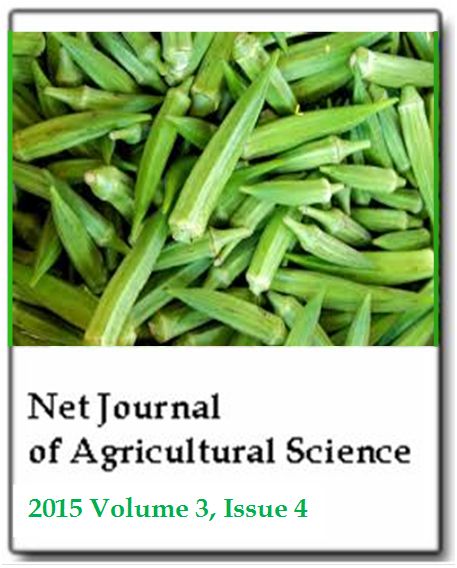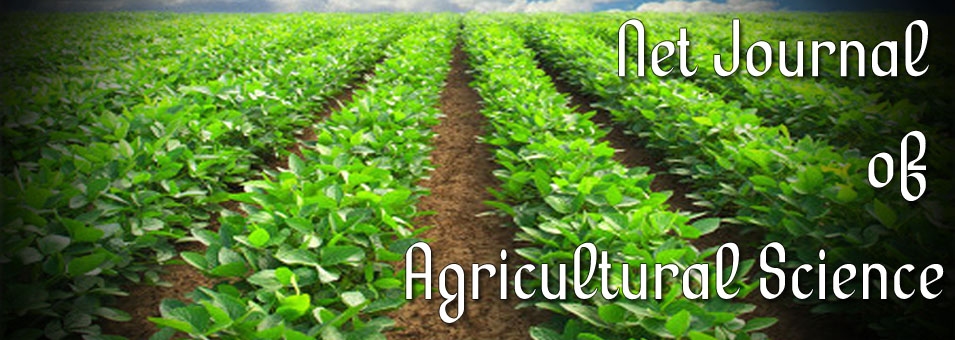Impact of poultry manure on fruit yield and yield components of inland valley okra (Albelmoschus esculentus L.) in a forest – Savannah transition ecology of Nigeria
Olaiya A. O., Atayese M. O., Okeleye K. A., Arowolo T. O. and Oluwole S. O.Net Journal of Agricultural Science
Published: October 14 2015
Volume 3, Issue 4
Pages 93-98
Abstract
A field experiment was conducted in an inland valley at the Federal University of Agriculture, Abeokuta, Nigeria in 2009 and 2010 to study the response of okra (Abelmoschus esculentus) to different rates of poultry manure. The poultry manure rates were 12.5, 25, 37.5 and 120 kgha-1 NPK (20-10-10) as check and no amendment as control. All these were arranged in Randomized Complete Block Design with five treatments and three replicates. Data collected on growth and yield parameters were analysed using general linear model and treatment means were separated using Duncan’s Multiple Range Test. Application of poultry manure at 37.5 kgha-1 produced the tallest plant (58.1 cm) which was significantly different from the rest treatments, it was followed by 25 kgha-1 (55.3 cm) and 12.5 kgha-1 (52.5 cm) and shortest plants were observed in the control. NPK produced the largest leaf area (1.36 m2plant-1) compared to other treatments. Fruit length and number of fruit plant-1 were similar among plants treated with 25 and 37.5 kgha-1. Similarly, fresh fruit weight was similar among the plants treated with 25 and 37.5 kgha-1 in the two years. It is therefore concluded that 25 kgha-1 of poultry manure may be adequate to meet the okra nutritional need in the partially depleted inland valley and can be produced twice using the residual moisture in dry season.
Keywords: Abelmoschus esculentus, fertilizer, fresh fruit weight, inland valley, poultry manure.
Full Text PDF
